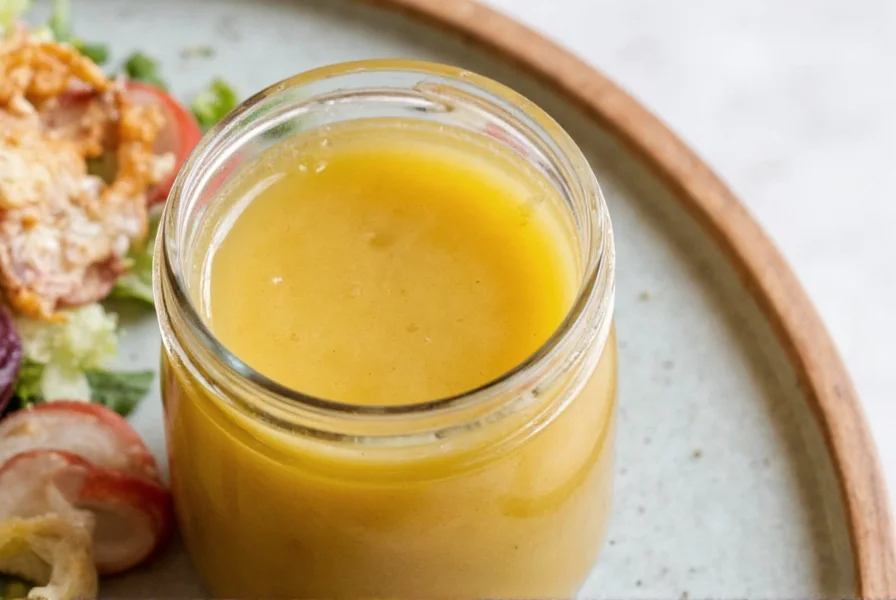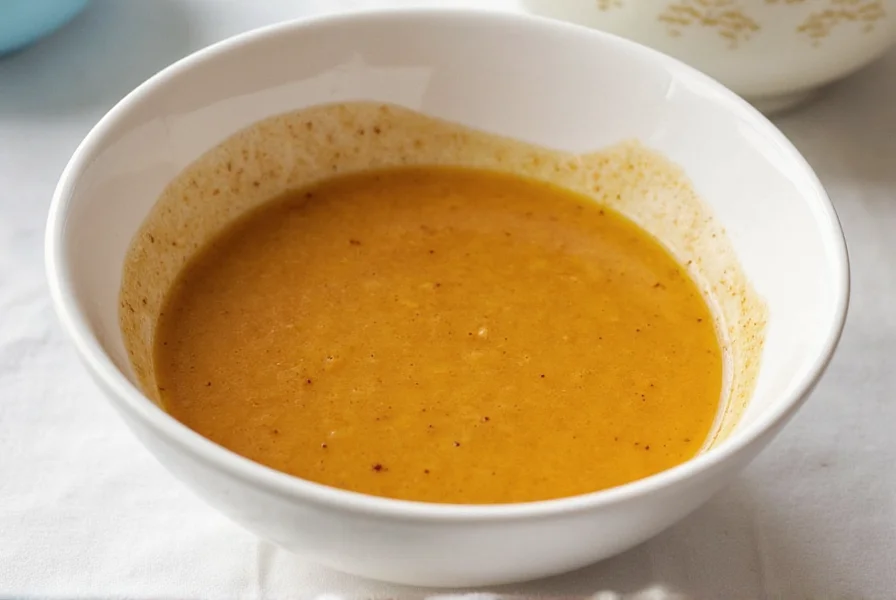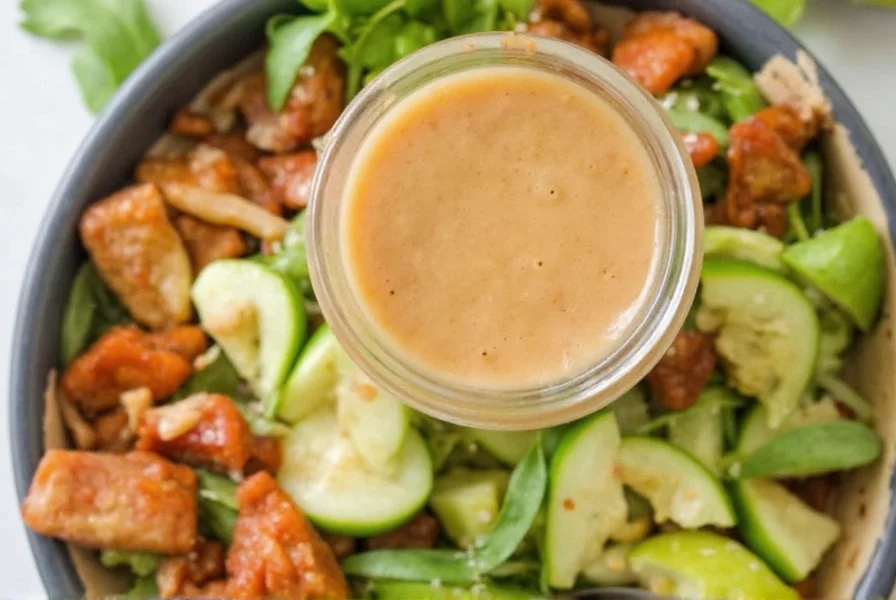Creating the perfect Asian ginger salad dressing requires understanding both the traditional components and how to balance flavors for your personal taste. This staple of Asian-inspired cuisine brings a refreshing zing to any dish while remaining remarkably simple to prepare with pantry staples.
The Essential Asian Ginger Salad Dressing Recipe
Follow this straightforward recipe to make a balanced, flavorful dressing that elevates simple greens into an extraordinary meal. The magic happens when fresh ingredients combine to create that signature sweet-savory-ginger profile.

Basic Ingredients
| Ingredient | Amount | Key Function |
|---|---|---|
| Fresh ginger, finely grated | 2 tablespoons | Provides signature spicy warmth and aromatic quality |
| Soy sauce or tamari | 3 tablespoons | Delivers umami depth and saltiness |
| Rice vinegar | 2 tablespoons | Adds bright acidity to balance richness |
| Sesame oil | 1 tablespoon | Contributes nutty aroma and helps emulsify |
| Honey or maple syrup | 1 tablespoon | Counteracts acidity with natural sweetness |
| Garlic, minced | 1 clove | Enhances savory complexity |
| Neutral oil (canola, grapeseed) | 2 tablespoons | Helps create stable emulsion |
Preparation Method
- Grate fresh ginger using a microplane for the most intense flavor (avoid pre-minced ginger for best results)
- Combine all ingredients in a small bowl or jar
- Whisk vigorously or shake in a sealed container until fully emulsified
- Taste and adjust sweetness or acidity as needed
- Let sit for 15-20 minutes before using to allow flavors to meld
Understanding the Flavor Components
The brilliance of homemade Asian ginger salad dressing lies in its balance of five fundamental taste elements. Unlike store-bought versions that often overemphasize sugar or salt, crafting your own allows precise control over each component.
Real ginger provides more than just heat—it contains zingiberene and other compounds that create a warming sensation distinct from chili peppers. When freshly grated, it releases volatile oils that give the dressing its characteristic aromatic quality. The quality of your soy sauce significantly impacts the final product; artisanal brands with simpler ingredient lists typically yield better results than those loaded with preservatives.
Rice vinegar's mild acidity (typically 4-5% acetic acid) works better than stronger vinegars because it complements rather than overwhelms the delicate ginger flavor. For optimal texture, the neutral oil helps create a stable emulsion that clings to salad greens without separating.
Variations for Dietary Preferences and Regional Styles
Once you've mastered the basic formula, numerous authentic variations can suit different dietary needs or regional interpretations of Asian ginger dressing.
Common Adaptations
- Gluten-free version: Substitute tamari for soy sauce (ensure it's certified gluten-free)
- Vegan alternative: Replace honey with pure maple syrup or date syrup
- Lower sodium option: Use reduced-sodium tamari and increase rice vinegar slightly
- Korean-inspired twist: Add 1 teaspoon gochujang for subtle heat
- Japanese variation: Incorporate 1 tablespoon mirin for enhanced sweetness
- Thai adaptation: Mix in 1 teaspoon lime zest and 1 tablespoon fresh lime juice
Professional chefs often adjust the ginger-to-liquid ratio based on the season—using slightly more ginger in colder months when its warming properties are more desirable, and lightening the ginger content during summer for a more refreshing profile.
Perfect Pairings and Creative Uses
While traditionally served with mixed greens, this versatile dressing shines in numerous applications beyond standard salads. Understanding proper pairings ensures you maximize its culinary potential.
It complements bitter greens like arugula or radicchio exceptionally well, cutting through their sharpness with its sweet elements. For grain-based salads, try it with quinoa, rice noodles, or soba noodles. The dressing also works beautifully as a marinade for chicken, salmon, or tofu—allow proteins to soak for 30-60 minutes before cooking for optimal flavor absorption.
Unexpected applications include using it as a dipping sauce for spring rolls, drizzling over roasted vegetables (particularly broccoli, asparagus, or bok choy), or even as a flavor booster in rice bowls. When using with delicate greens, apply the dressing just before serving to prevent wilting.
Troubleshooting Common Issues
Even simple recipes can present challenges. Here's how to address frequent problems when making Asian ginger salad dressing:
- Separation issues: If your dressing separates, add 1 teaspoon Dijon mustard as an emulsifier or shake vigorously before each use. For longer stability, increase the neutral oil content slightly.
- Too spicy: Balance excessive ginger heat with additional sweetener or a splash of neutral oil. Next time, use 1.5 tablespoons of ginger instead of 2.
- Too salty: Counteract with extra rice vinegar and sweetener. Dilute with 1-2 tablespoons of water if necessary.
- Lacking depth: Add 1 teaspoon toasted sesame seeds (ground) or a dash of fish sauce for umami enhancement.
- Too thin: Reduce liquid ingredients slightly or add 1/2 teaspoon chia seeds to thicken naturally.

Storage and Shelf Life Guidelines
Proper storage maintains both safety and flavor quality. Store your homemade Asian ginger salad dressing in an airtight container in the refrigerator for optimal freshness.
The dressing typically remains fresh for 5-7 days. The acidity from the rice vinegar acts as a natural preservative, but fresh ingredients like ginger and garlic begin to degrade after this period. For best results, make dressing in smaller batches that you'll use within a week.
Do not freeze Asian ginger salad dressing, as the emulsion will break upon thawing and fresh ginger develops off-flavors when frozen. Always check for signs of spoilage before using—discard if you notice mold, unusual cloudiness, or sour odors beyond the normal vinegar tang.
Frequently Asked Questions
Can I make Asian ginger salad dressing without sesame oil?
Yes, you can substitute sesame oil with additional neutral oil plus 1/2 teaspoon toasted sesame seeds (ground). While you'll lose some authentic flavor, the dressing remains delicious. For closer approximation, look for sesame-flavored olive oil as an alternative.
How can I make my ginger dressing less spicy?
Reduce the grated ginger to 1 tablespoon and increase the honey by 1/2 tablespoon. You can also strain the dressing through a fine mesh sieve to remove ginger fibers while retaining flavor. Using young ginger (pale yellow with thin skin) rather than mature ginger (darker, thicker skin) naturally provides milder heat.
Why does my homemade ginger dressing separate?
Separation occurs when the emulsion breaks, typically due to insufficient mixing or improper oil-to-liquid ratio. Ensure you whisk vigorously for 30 seconds or shake in a sealed container for 20 seconds. Adding 1 teaspoon Dijon mustard helps stabilize the emulsion. Always shake well before each use as some separation is natural in oil-based dressings.
What's the best way to grate ginger for salad dressing?
Use a microplane grater for the finest texture that fully incorporates into the dressing. Peel the ginger first using a spoon (easier than a vegetable peeler), then grate against the microplane. This method extracts maximum juice and flavor while creating particles small enough to distribute evenly without being noticeable in the final dressing.
Can I use ground ginger instead of fresh in Asian salad dressing?
While fresh ginger is strongly preferred for authentic flavor, you can substitute 1/2 teaspoon ground ginger for 1 tablespoon fresh ginger in a pinch. However, the flavor profile will differ significantly—ground ginger offers earthiness but lacks the bright, spicy notes of fresh ginger. The dressing will be less vibrant and complex, so consider adding 1/4 teaspoon lemon zest to compensate for lost brightness.











 浙公网安备
33010002000092号
浙公网安备
33010002000092号 浙B2-20120091-4
浙B2-20120091-4